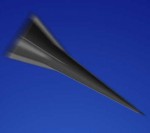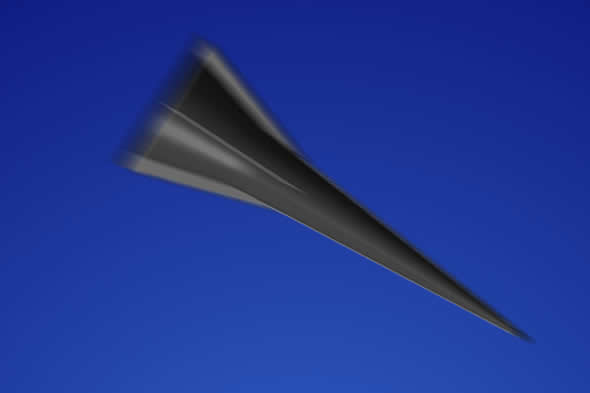
Today the U.S. Army Space and Missile Defense Command/Army Forces Strategic Command conducted the first test flight of the Advanced Hypersonic Weapon (AHW) concept. Riding on a three-stage Strategic Targets System (STARS) booster stack, the Hypersonic Glide Body (HGB) was accelerated to hypersonic speed of mach 5 (3,728 mp/h), flying a glide trajectory to impact on the Reagan Test Site at Kwajalein Atoll.
Through the mission the AHW provided telemetry data about flight systems behavior, thermal loads, and other system performance data to verify analytical models, and demonstrating advanced aerodynamic control maturity. The glide vehicle was launched after midnight today, on 1:30 a.m. Hawaii-Aleutian Time (6:30 a.m. EST), from the Pacific Missile Range Facility, Kauai, Hawaii to the Reagan Test Site, U.S. Army Kwajalein Atoll. Shaped as a glide vehicle, the weapon is designed to fly within the earth’s atmosphere at hypersonic speed and long range. This single flight demonstration emphasized aerodynamics; navigation, guidance, and control; and thermal protection technologies.
The data collected will be used by other DOD programs, to model and develop future hypersonic boost-glide capabilities. The AHW is part of the Pentagon’s US$600 million Conventional Prompt Global Strike (CPGS) program, aimed at providing U.S. military services with conventional attack weapons capable of striking anywhere on earth within less than 60 minutes. As part of the CPGS effort, the Defense Advanced Research Projects Agency conducted two tests of boost-glide flight tests of the Hypersonic Technology Vehicle (HTV-2) in April 2010 and August 2011, results from which were used in planning the AHW flight test. DARPA and the Air Force Space and Missile Systems Center are also developing a parallel hypersonic glide weapon known as the Conventional Strike Missile (CSM), expected to deliver a weaponized demonstration flight in the second quarter of 2012. If proven feasible, CSM could become operational as a land-based missile by 2017. The objective of such an Advanced Hypersonic Weapon is to provide a transformational capability on the order of 6,000-kilometer range with 35 minutes time-of-flight and ten-meter accuracy or better.
The AHW program is managed and executed by the U.S. Army Space and Missile Defense Command/Army Forces Strategic Command program office in Huntsville, Ala. The booster system and glide vehicle were developed by Sandia National Laboratories, Albuquerque, N.M. and the thermal protection system by the U.S. Army Aviation and Missile Research Development and Engineering Center, Huntsville, Ala.


















